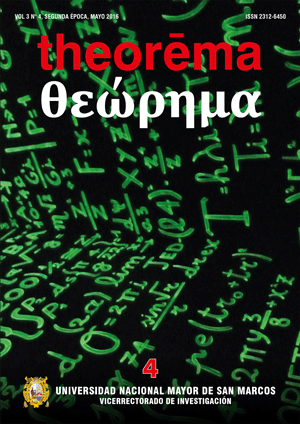Waste treatment system primary distillation using microbial consortia
Keywords:
Microbial consortia, Pseudomonas stutzeri, biodegradation, waste of primary distillation, bio surfactants, bio-emulsifiers, bio cracking.Abstract
In the present study we report the bio treatment of the waste generated in the primary distillation of crude oil using a microbial consortium and a strain of Pseudomonas stutzeri. The sample for this study was the residual from La Pampilla refinery, which was donated by the company Repsol under our request. In fact, it was possible to fluidize the residual by mean of the action of the bacterial consortium and a strain of Pseudomonas stutzeri. The process may be explained as a bio cracking of heavy residuals taking place at room temperature. Prior to this process we proceeded to the spread of microbial consortium on the substrate (residual) to serve as inoculum in the phase of enrichment. The process was carried out at laboratory scale and the results obtained indicate that the microbial consortium may be used to give added value to an environmentally undesirable industrial waste.Downloads
Published
Issue
Section
License
Copyright (c) 2016 J. C. Woolcott, R. A. Palomino, H. Gómez, F. Anaya, J. E. Loayza, O. Cornejo, R. Erazo

This work is licensed under a Creative Commons Attribution-NonCommercial-ShareAlike 4.0 International License.

Theorema segunda época by Vicerrectorado de Investigación y Posgrado is licensed under a Creative Commons Reconocimiento-NoComercial-CompartirIgual 4.0 Internacional License.
Creado a partir de la obra en http://revistasinvestigacion.unmsm.edu.pe/index.php/Theo/index.
AUTHORS RETAIN THEIR RIGHTS:
a. Authors retain their trade mark rights and patent, and also on any process or procedure described in the article.
b. Authors retain their right to share, copy, distribute, perform and publicly communicate their article (eg, to place their article in an institutional repository or publish it in a book), with an acknowledgment of its initial publication in the Theorema segunda época.
c. Authors retain theirs right to make a subsequent publication of their work, to use the article or any part thereof (eg a compilation of his papers, lecture notes, thesis, or a book), always indicating the source of publication (the originator of the work, journal, volume, number and date).



